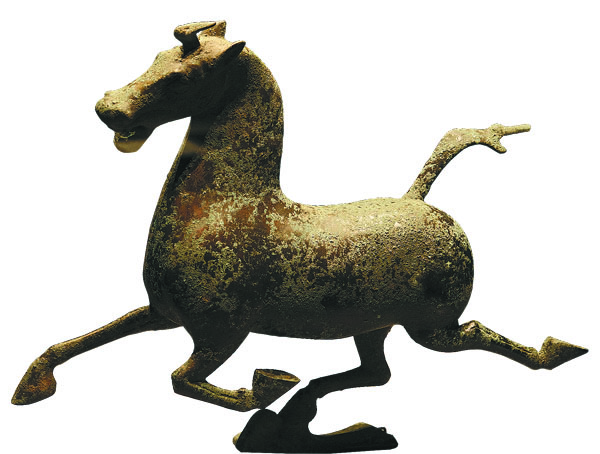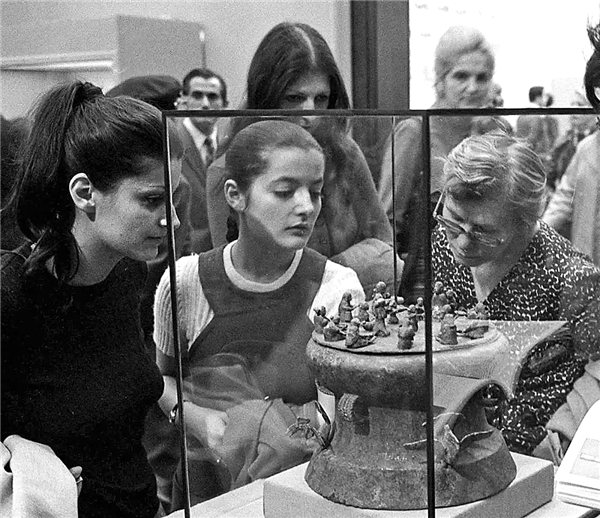DepthReading
Exhibition remembers landmark overseas tour of historic cultural relics

Half a century ago, the frosty relationship between China and Western countries began to thaw. Nonetheless, this Eastern land, with its long history and ancient civilization, still seemed mysterious to many Westerners, particularly following decades of political confrontation.
During Henry Kissinger's secret visit to China in 1971, he attended an exhibition of key cultural relics at the Palace Museum in Beijing. His strong interest in the items on show inspired China's cultural heritage authorities to consider displaying these national treasures to the wider public overseas. The idea was supported by Zhou Enlai, the Chinese premier at the time.
From 1973 to 1978, The Exhibition of Archaeological Finds of the People's Republic of China went to 24 venues in 15 countries and regions, including the United States, Japan, France and the United Kingdom.
As the first Chinese archaeological exhibition overseas since the founding of the People's Republic of China in 1949, this groundbreaking trip was warmly welcomed by more than 6.5 million visitors around the world, largely shattering many Western stereotypes of China. For example, Queen Elizabeth II and Edward Heath, then British prime minister, also attended the exhibition when it arrived in London.
Celebrating the 50th anniversary of that remarkable tour, the curtain has been raised on a special exhibition recalling that exceptional page in the history of Chinese diplomacy and the country's approach to its cultural heritage. A Glorious Path opened at the Gallery of Art Exhibitions China in Beijing on Monday, and will run until the end of October.
"That exhibition in the 1970s bore a mission to demonstrate the prosperity of ancient Chinese civilization," says Xie Bing, deputy director of the National Cultural Heritage Administration. "Wherever it went, it caused a sensation.... We want more young people to learn the stories of that period through this special exhibition, and to experience for themselves the glorious path the country's cultural relics have marched."
About 200 old photos and about 370 other exhibits, including replicas of highlighted relics from the tour in the 1970s, related tickets, posters, pamphlets and newspaper reports, are shown at the ongoing exhibition to transport people back to that monumental time.
A letter written by Zhou Enlai guiding the organization of the exhibition, a guest book full of emotional remarks by American visitors and paintings made by Japanese children that were inspired by seeing the Terracotta Warriors all help to recall the warm and splendid saga for today's visitors.

Many renowned Chinese relics were included in the inventory of that global tour, including the famous bronze statue of a galloping horse, the ceramic figurine of a storyteller, and a Changxin Palace Lamp, all from the Han Dynasty (206 BC-AD 220).
The bronze horse, discovered in Gansu province, had only been excavated two years prior to embarking on its global journey. It is now used as the official logo for Chinese tourism.
Xiang Dechun, an expert with Beijing Cultural Heritage Bureau, says that the exhibition showcases the unwavering efforts made by Chinese cultural heritage conservators to promote cultural communication. "It encourages us to create more, and better, overseas exhibitions of Chinese relics to show the evolution of our over-5,000-year-old civilization," he says.
Art Exhibitions China has been the nation's key institution dedicated to organizing exhibitions of Chinese cultural relics overseas, as well as introducing foreign exhibitions to the country. To better record history, it also launched an oral history project, featuring in-depth interviews of scholars participating in that fateful tour half a century ago.
Inspired by the sparkling start in 1973, Chinese cultural heritage conservators and museum operators have been devoted to enhancing cross-cultural communication. More than 400 Chinese exhibitions were taken overseas in the past decade.

Category: English
DepthReading
Key words:
